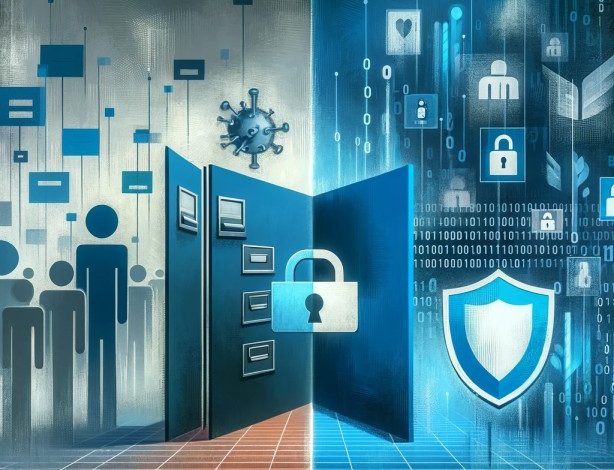
Comprehensive Understanding of HIPAA and HITECH
In the changing world of healthcare, HIPAA and HITECH are words everyone needs to know. These acronyms shape the environment for data security and patient privacy in medicine. For digital-age sensitive information, HIPAA and its techno-savvy companion, HITECH (Health Information Technology for Economic and Clinical Health) aren’t just regulatory frameworks; they are the guardians of such data. Allow us to take you with us on an exploration of HIPAA and its myriad intricacies; whether it is the all-encompassing insights or their essential roles in protecting patients ‘healthcare data, this will be a learning process for everyone.
Understanding the Basics: HIPAA and HITECH Defined
Setting the stage Before we dive into darkness, then let’s take a look back. The Health Insurance Portability and Accountability Act, or HIPAA, was passed in 1996 with the main intent of protecting patient information. It includes healthcare providers, insurance plans, and healthcare clearinghouses as other participants. Standards exist for the secure transmission of electronic protected health information (ePHI).
This brings us to HITECH, the Health Information Technology for Economic and Clinical Health Act. In 2009, HITECH was enacted to complement HIPAA by overcoming the technological developments and difficulties of the intervening years. It sheds light on the use of electronic health records (EHRs) and encourages investment in health information technology at the same time as it reaffirms, restates, and expands all those elements laid down under HIPAA.
HIPAA and HITECH in Harmony
But HIPAA and HITECH are not separate laws unto themselves; they work together to form a unified structure that meets the multi-faceted world of healthcare data security. By using the anchor text HIPAA-HITECH, we are at least tacitly recognizing this synergy: a de facto merging of protecting layers around patient information.
The cooperation between HIPAA and HITECH is a reflection of the recognition by every stakeholder in healthcare that our digital world is changing. As technology continues its march forward, the legislature is playing catch-up to maintain patient data security, and healthcare organizations must stay on their feet to keep up with information age titans.
The Core Tenets of HIPAA Compliance
At the heart of HIPAA lies a commitment to three core principles: patient information confidentiality, integrity, and availability. Confidentiality ensures that patient data is not accessible to unauthorized persons, integrity controls prevent the information from becoming distorted or manipulated in some way, and availability guarantees that authorized individuals can access the information at any time.
HIPAA encompasses a broad spectrum of entities within the healthcare system. HIPAA regulations designate healthcare providers, health plans, and clearinghouses as “covered entities” that are directly accountable for compliance. Moreover, business associates are entities that deal directly with patient information on behalf of covered entities; they also have to abide by HIPAA’s strict standards.
One of HIPAA’s greatest strengths is its flexibility. The regulations also are meant to reflect the diversity of the healthcare environment and acknowledge that a one-size-fits-all approach may not be possible. This flexibility makes for scalability. Large hospital systems can implement compliance procedures that suit their needs, and so can small medical practices.
HITECH Act: Boosting HIPAA Compliance with Technology
So as we move into the world of HITECH, think of it almost like a brash new kid brother to HIPAA. A set of provisions to bring healthcare into the digital age is introduced by HITECH. It is noteworthy that it has promoted electronic health records (EHRs) and the digitalization of pharmacological information. The move from paper to electronic records makes everything easier, more accessible, and interoperable.
While HITECH isn’t only intent on technological progress, it also knots the rope of compliance with HIPAA. To highlight the significance of protecting patient information in the era of technological development, Article 10 introduces stricter penalties for noncompliance.
Additionally, the HITECH Act includes a Breach Notification Rule that requires all covered entities and business associates to notify both affected persons and the Department of Health and Human Services (HHS) in case of any breaches involving unsecured protected health information. The focus on transparency and speed of response fits well with the greater trend toward respect for patient rights and data privacy.
Navigating the Hurdles: Common Misconceptions
With the beginning of our exploration through its labyrinthine depths, here are some commonly held misconceptions regarding these regulatory regimes that must be lit up and stifled. They can create barriers and hamper the implementation of an effective compliance strategy. So let’s untangle these myths, and highlight the complex reality of HIPAA-HITECH.
Misconception 1: IT is the Only Concern about Compliance
- Reality: Technology, though a crucial factor in achieving HIPAA HEITCH compliance, is by no means the only one. Compliance is a multifaceted process requiring input from many sources within the healthcare organization. All kinds of people are needed, not just IT specialists who develop and operate secure systems but also medical personnel involved in patient information handling; administrators responsible for policy matters; and staff at all levels.
- Importance: Recognizing that compliance is everybody’s responsibility encourages a total approach, making every person aware of their responsibilities for protecting patient information. This establishes a culture of awareness and responsibility so that each department contributes to the overall compliance strategy.
Misconception 2: Compliance Is a One-Time Job
- Reality: Compliance is not a once-and-done box to be checked. It’s a constantly changing process requiring constant care and adjustment. New technology, regulatory changes, and threats are constantly changing the look of health care. For this reason, a one-time effort is insufficient to meet hospitals’ rapidly changing challenges.
- Importance: The process of compliance must be continuous; otherwise we will lag, and their data security arrangements will collapse. Proactive compliance includes regular assessments, revisions to policies and procedures as well as training.
Navigating the Reality: Addressing Misconceptions Effectively
This describes the first step in preparing to achieve effective HIPAA/HITECH compliance: Dispelling misconceptions through understanding and analysis. Here’s how to navigate the reality behind these myths:
Promoting Cross-Functional Collaboration
- Encourage cooperation between IT scientists, health care workers, administrators, and the staff.
- Build up a culture in which every department understands its share of responsibility for compliance.
Emphasizing Continuous Improvement
- Recognize that you are in the middle of a continuing process, not some one-time project.
- Assessment and evaluation should be carried out regularly, to keep track of changing risks.
- Providing Comprehensive Training:
- Train all the employees at regular intervals as to what each one in particular must do to achieve compliance.
- Be sure training courses cover not only technical considerations but also patient data handling.
Staying Informed and Updated
To keep up with the world’s most advanced technological developments, regulatory changes, and industry best practices.
For the rules governing compliance, keep timely revisions to policies and procedures.
Encouraging a Culture of Accountability
- Establish a sense of ownership and accountability among all employees in any compliance-related work.
- Recognize and reward teams that take proactive steps to achieve a compliant, secure environment.
Correcting these misconceptions and tackling frankly the realities of HIPAA-HITECH compliance will place healthcare organizations on a firm foundation. It’s not just a regulatory matter. We want ethics, security, and responsibility in the handling of patient information for every person. With this help, healthcare organizations get one step closer to a future where compliance is not seen as something that has to be battled through but as an integral part of the practice and provision of high-quality, safe care.
Emerging Trends: Telehealth and Beyond
With changing trends constantly shaping the healthcare landscape, HIPAA HITECH has to adjust as well. Telehealth is one such trend, especially in a post-pandemic era. Through telehealth, healthcare services go virtual to provide convenience and ease of access. But it also presents problems for data security.
HIPAA-HITECH understands the urgency of these challenges. On the other hand, telehealth platforms are held to just as strict a standard as traditional healthcare settings. This involves assured channels for communication, encryption of patient information, and systematic training for health professionals involved in virtual consultations.
In addition to telehealth, the application of artificial intelligence (AI) and machine learning (ML) in healthcare processes adds a complication for data privacy. Now that these emerging technologies are taking hold, HIPAA HITECH will probably soon be changing its focus to offer guidance on the ethical and secure use of AI and ML in healthcare.
Looking Ahead: The Future of HIPAA HITECH Compliance
As we look into the future, healthcare and technology will undoubtedly continue to transform. In the changing world, however, HIPAA HITECH compliance will have to keep up with emerging trends new technologies new laws. Such a collaboration of all healthcare stakeholders, regulatory bodies, and technology experts will play an important role in the future development of data security and patient privacy.
Conclusion
There must be a commitment to ethics in healthcare, patient privacy, and responsible technology use. Comprehensive understanding cannot only meet the requirements of regulation but is also failure to do so at our own risk. It is this interplay of regulatory frameworks that forms the skeleton of a healthcare system that encourages innovation while acting to protect patient information privacy. In the complex terrain of healthcare compliance, let’s accept that HIPAA HITECH is constantly changing. Together we can build a future where technology and patient-centered care are happily married.





